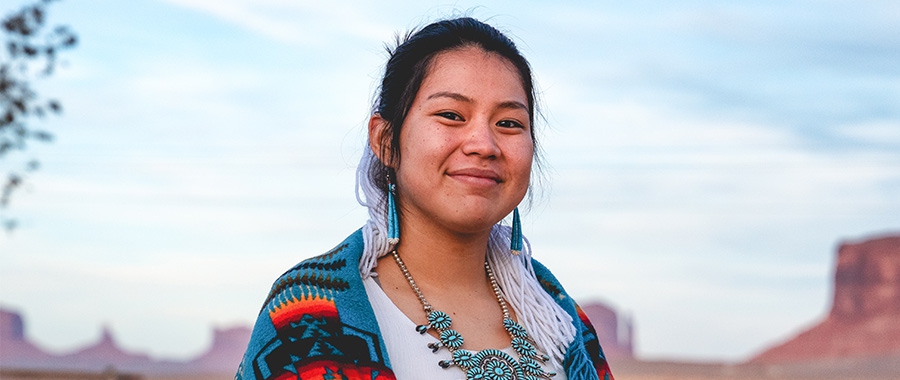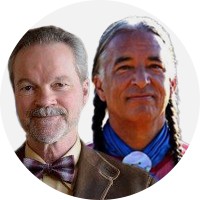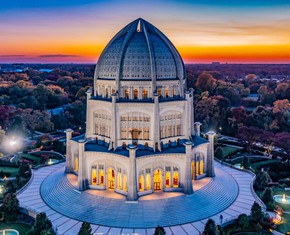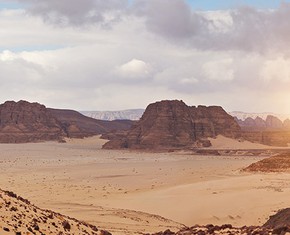The views expressed in our content reflect individual perspectives and do not represent the authoritative views of the Baha'i Faith.
Have you ever wondered about the “forgotten” religious and spiritual traditions—the ones lost in the mists of time?
The Baha’i teachings recognize and honor those traditions: “Undoubtedly in those regions the Call of God must have been raised in ancient times, but it hath been forgotten now.” – Abdu’l-Baha, Tablet to Amir Khan. The Baha’i writings also say:
The Reality of the divine Religions is one, because the Reality is one and cannot be two. All the prophets are united in their message, and unshaken. They are like the sun; in different seasons they ascend from different rising points on the horizon. Therefore every ancient prophet gave the glad tidings of the future, and every future has accepted the past. – Abdu’l-Baha, Abdu’l-Baha in London, p. 29.
Abdu’l-Baha led the Baha’i Faith from 1892 to 1921. During this time, much of the sacred indigenous religious lore was forcibly “forgotten” as a matter of official U.S. government policy:
In his Annual Report of the Commissioner of Indian Affairs on October 10, 1882 Commissioner Hiram Price planted a seed that would forever alter the course of United States government policy concerning American Indian religious freedom: “Civilization is a plant of exceedingly slow growth,” Price wrote, “unless supplemented by Christian teaching and influences” (Prucha 1990:157). The following year Secretary of the Interior Henry M. Teller took up the torch lit by Price. In his Annual Report on November 1, 1883 Teller spoke of “a great hindrance to the civilization of the Indians, viz., the continuance of old heathenish dances, such as the sun-dance, scalp-dance, &c. These dances … ought … to be discontinued, and if the Indians … are not willing to discontinue them, the agents should be instructed to compel such discontinuance” (Prucha 1990:160). As a result of this push to “civilize” the American Indian by means of suppressing their distinct spiritual practices and traditions American Indian religious freedom was outlawed by the government in 1883. The ban was not officially lifted until the American Indian Religious Freedom Act of 1978.
The effects of the influential 1928 Merriam Report nearly a half century later gradually led to the demise of the ban on American Indian religion and ritual, anticipating the 1934 Wheeler-Howard Act, popularly known as the Indian Reorganization Act (Prucha 1990:219–225). Although traditional spiritual practices were apparently observed and maintained in secret during the crucial transition period from the initial ban in 1883 until after the Merriam Report in 1928, a great amount of religious knowledge was lost as the older generations of Lakotas passed on and the younger generations were raised in a hybrid milieu in which the ever-present and inescapable shadow of colonialism, Christianity, and other non-traditional beliefs and values constantly loomed. – David Posthumus, Transmitting Sacred Knowledge: Aspects of Historical and Contemporary Oglala Lakota Belief and Ritual, Indiana University, 2015, pp. 427–428.
As for the role of the Lakota holy messenger White Buffalo Calf Woman, David Posthumus noted:
Perhaps White Buffalo Woman originally provided the model of not only the intermediary but also the method by which religious knowledge is passed on and practitioners trained, namely, the master-apprentice model. According to Edward Curtis (1908:56–60), White Buffalo Woman instructed Tȟatȟáŋka Nážiŋ (Standing Buffalo) on both the Sacred Pipe and the ceremonies, who then passed that knowledge down to the next generation. In any case whether the original model was provided by the symbol of the Four Winds or White Buffalo Woman, the religious concept of the intermediary is ancient, significant, and pervasive. – p. 125, n. 72.
As in the previous four BahaiTeachings.org articles, the conversation between authors Christopher Buck and Lakota artist Kevin Locke continues:
Q: Kevin, would you please comment on the above? Do you agree that what is “forgotten”—or suppressed, lost, etc.—may be “remembered,” or at least partially preserved and restored?
A: It is accurate to state that most surviving U.S. indigenous peoples, under the genocidal government-sponsored campaign of extermination and eradication, were forced to succumb to the juggernaut of acculturation and colonization, and were thus stripped of their ancestral spiritual heritage.
So, in a sense, one could definitely say that many were forced to “forget” their own spiritual traditions.
However, many heroic souls went to great extremes to safeguard and keep alive the spiritual traditions, dedicated to “never forget”—but instead to fortify and perpetuate the sacred ways.
Despite relentless Euro-American pressure, many of the indigenous languages were kept alive and proved to be an impenetrable safeguard to the erasure of spiritual ways and knowledge.
My mom’s [Patricia Locke’s] uncle was selected to be a tradition-bearer by the older Lakota generations during the early reservation period. At the same time he was forced to attend school. Since school was interfering with his true education, he concocted a plan to continue his studies.
Despite the Reservation’s truancy officers continually chasing him down and escorting him to school, he was eventually banned from attending all schools. Not a single teacher could be found who would take him.
He did it by collecting rattlesnakes, toads, slugs, hornet’s nests, spiders, etc. and secretly placing them in the teachers’ drawers and closets! He became so expert at this that he was quite famous and banned from all schools in the region.
Because of his determination, he learned, preserved, and taught complete Lakota ceremonial knowledge throughout his life, until his passing in the mid-1980s.
Q: Since sacred Lakota teachings, to varying degrees, may have been lost, what are the implications for interfaith relations between the Baha’i and Lakota faith communities?
A: Most Lakota, out of necessity, have become expert syncretists—people comfortably able to fuse and unite different cultures and spiritual traditions. It would be wonderful to have more involvement between these faith communities on serious topics of discourse!
Q: Do you agree that Baha’is should recognize and respect indigenous spirituality, as part of the Baha’i teachings of the “oneness of religion,” peace among religions, etc.? In so doing, what part of Lakota religious tradition is harmonious with Baha’i beliefs and practices?
A: Yes, I agree that Baha’is—and all people—should be cognizant and respectful of the spiritual heritage of any land where they reside, and realize that anything good, beautiful and sacred in every culture is derived from the same Source.
Q: Understood. So let’s think about practical steps that everyone, including Baha’is, can take in exploring more of the divine echoes that reverberate in the sacred teachings of White Buffalo Calf Woman, Deganawida, the Peacemaker, and Baha’u’llah.
A: The Lakota, Haudenosaunee and Baha’i sacred traditions, each in their own ways can, and should, enrich one another. That would be a good thing. This, as I understand it, may be one possible meaning of this important statement by Shoghi Effendi, the Guardian of the Baha’i Faith, who wrote:
Therein lies the strength of the unity of the [Baha’i] Faith, of the validity of a Revelation that claims not to destroy or belittle previous Revelations, but to connect, unify, and fulfill them. – Shoghi Effendi, The World Order of Baha’u’llah, p. 22.
As Baha’is, including people of goodwill and compassion everywhere, we all need to do what we can to connect, unify and fulfill these beautiful spiritual traditions.
















Comments
Sign in or create an account
Continue with Googleor